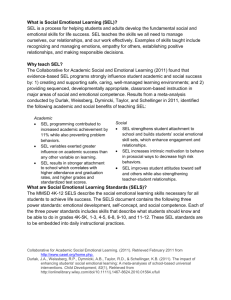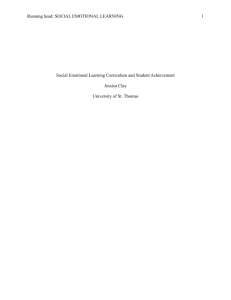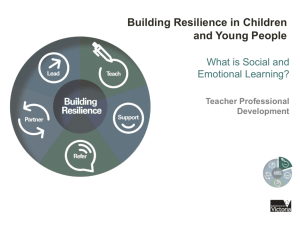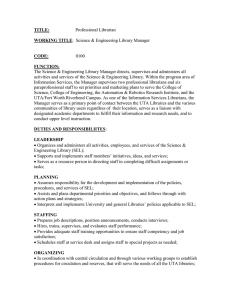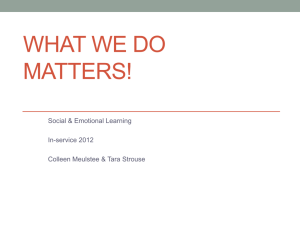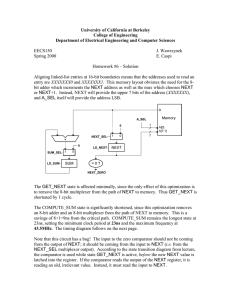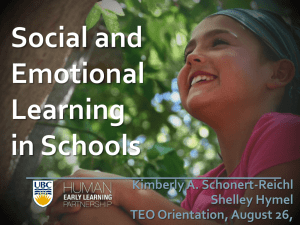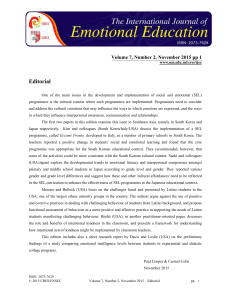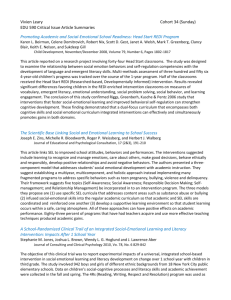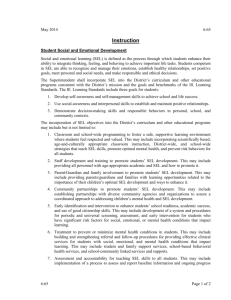SEL Part 4 - Young Readers
advertisement
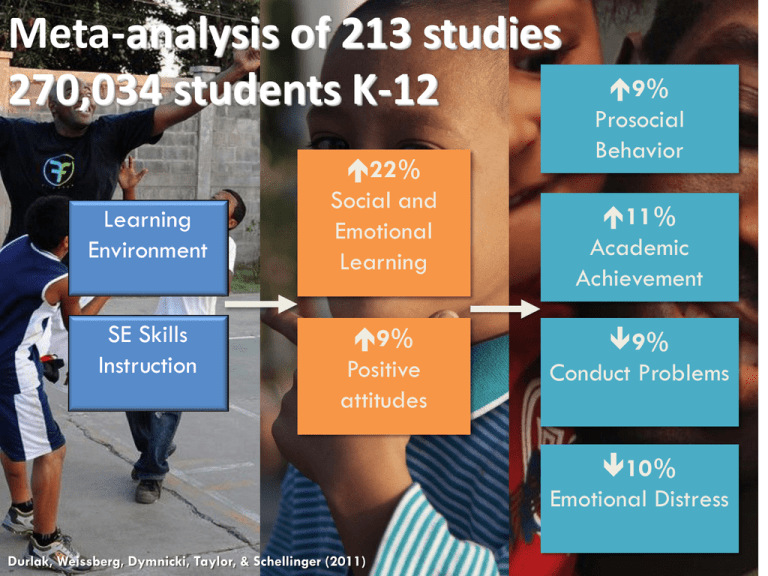
Meta-analysis studies Meta-analysis:of SEL213 Promotes Success in School Durlak, Weissberg, Dymnicki, Taylor, & Schellinger 9% 270,034 students K-12 (2011) Prosocial Learning Environment SE Skills Instruction 22% Social and Emotional Learning 9% Positive attitudes Behavior 11% Academic Achievement 9% Conduct Problems 10% Emotional Distress Durlak, Weissberg, Dymnicki, Taylor, & Schellinger (2011) SEL is not just for kids… The Prosocial Classroom: A Model of Teacher Social and Emotional Competence and Classroom and Child Outcomes Healthy Teacher/Student Relationships Teachers’ Social & Emotional Skills & Well Being Effective classroom management skills Healthy Classroom Climate Student Social, emotional & academic outcomes Effective SEL implementation School/Community Context Factors Jennings & Greenberg, 2009 The Burnout Cascade Emotional Exhaustion De-personalization Lack of Accomplishment 50% leave within first 5 years of teaching (NEA, 2006) 5 Fostering Resilience in Students: The Mindset of Teachers “The assumptions educators possess about themselves, their role as teachers, and their students‘capabilities play a significant role in determining expectations, teaching practices, and ultimately student happiness and success.” (p. 1) Brook s& Goldstein (2008). Canadian Journal of School Psychology 648 The Science Behind SEL: Findings from Recent Research It’s Good to be Good “It’s not survival of the fittest; it’s survival of the kindest.” Dacher Kelner
